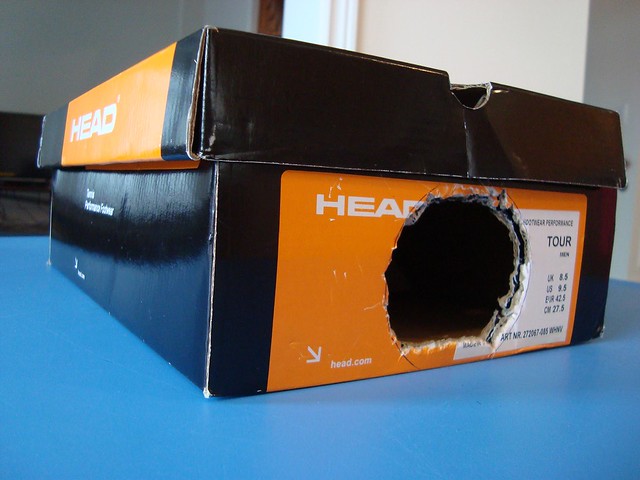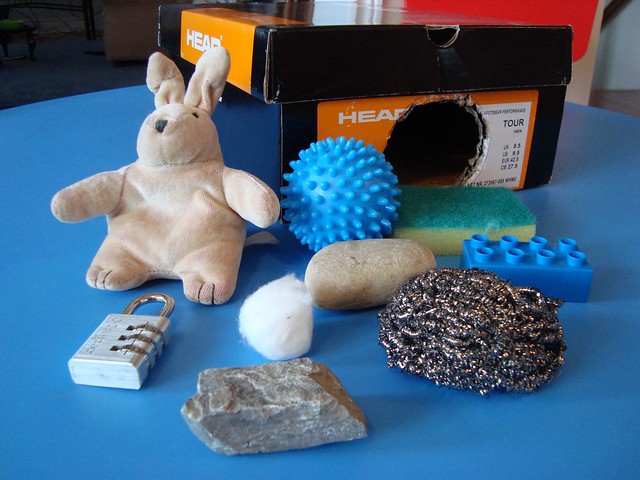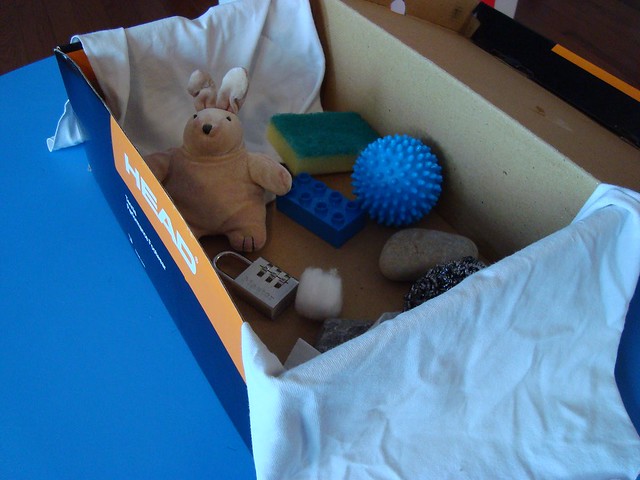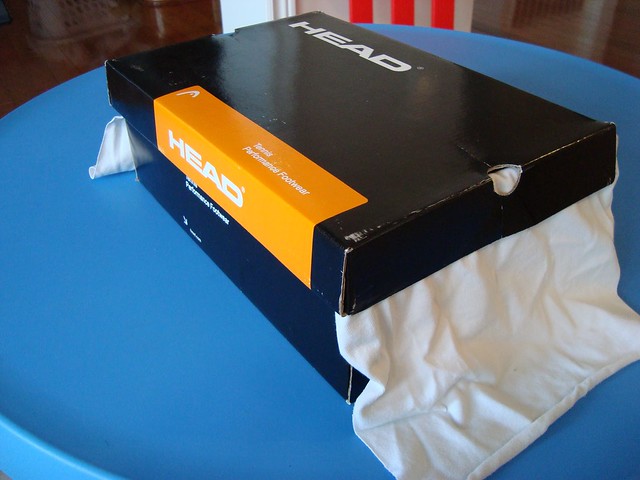You are here
Tactile Box

Here's how you can put together a fully functional tactile box with materials lying around your home:
Find an old shoe box and cut a hole in one end. Make sure your child's hand can fit inside the hole.
Find a bunch of small items of varying sizes and textures. Make sure each will easily fit into the shoe box. They don't need to be new items; when my kids did this activity they still had fun even though they were already familiar with all of the tactile items we used.
Once your tactile items are in the box, drape a rag over the end to cover the hole. Voilà - a curtain to prevent curious little eyes from peeking in when your kids are guessing away.
Note: I actually made two holes, one for each of our boys, though they had good fun taking turns with just one of the holes.
Close the lid of the shoe box. Now your tactile activity is ready to go!
How to play:
Have your child stick one of their hands into a hole. (No peeking! The rag curtain should prevent this anyhow.) As they touch an item, have them describe it using words such as smooth, rough, squishy, soft, hard, heavy, light, warm, cool, prickly, etc.
If you have more than one child participating, you can have them take turns.
In the beginning, our children needed help to describe each item. At first, they kept saying things like, "It feels like Mr. Bunny!" or "It feels like a rock!" To help them understand what to do, I showed them an item that I removed from the box and explained: "Feel this rock with your hand. It's bumpy and rough on one side, but rounded and smooth on the other side. Describe what you feel, if you feel it's soft or hard, rough or smooth, heavy or light."
A simple activity, but our children thought it was the cat's meow. I hope yours do too!
This activity is described in the book, Mudpies to Magnets: A Preschool Science Curriculum.
Related Posts:
Join more than 80,000 readers worldwide who receive Dr. Ben Kim's free newsletter
Receive simple suggestions to measurably improve your health and mobility, plus alerts on specials and giveaways at our catalogue
Please Rate This
Highest RatedNo articles have been rated for usefulness recently, please check later. | Related Posts | ||














